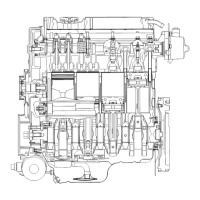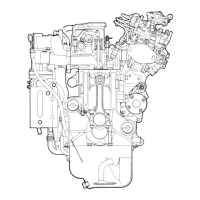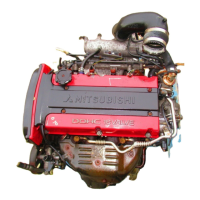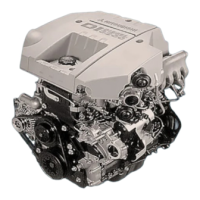CHAPTER 1 OPERATION AND HANDLING
1.
NEW
ENGINE
Prior
to
putting it
in
use, check as follows:
1) See if there are any loose bolts
or
nuts.
2)
Lubricate according
to
Lubrication Table given later.
3)
- Fill fuel tank with clean fuel
and
bleed (or prime) fuel system.
4)
Fill radiator with clean
soft
water
as a ccolant.
When air temperature
is
expected
to
fall below
the
freezing point, use an antifreeze.
The
service life
of
new engine much depends upon how it
is
handled
in
the initial
runs.
So, lubricate, and check it with particular care (Refer
to
Lubrication and Service
Tables), and before it covers 60Hr, follow
the
instructions given below, taking care
not
to
overstrain it.
1)
After
starting, never apply load immediately
without
warming it up well by idling.
2)
Don't
run
it
at
high speed.
3) Run
under
some
70%
of
load
at
the
maximum.
-2.
CHECKUP AND PREPARATIONS PRIOR TO
STARTING
Prior
to
starting
the
day's operations, check as
follows with
the
engine placed as level as possible.
1)
Engine oil level
Pull
out
oil level gauge and wipe;
then
put
it
in and
out
again
to
check oil level. Oil level
must
be
above mid-point between
upper
"FULL"
line
and lower one.
If near or below
the
mid·point,
refill
up
to
upper
line
"FULL".
Oil level difference between these
two
lines
corresponds
to
approx. 1 litre.
After
refilling, wait for all
added
oil
to
run
Fig.
1-1
Ch~king
oil level
down
into oil
pan
and for
oil
level
to
settle, before checking it again.
2) Cooling
water
level
Optimum
-water level
is
20'-30mm
below
the
bottom
of
water
inlet for pressure
type
radiator, and up
to
overflow pipe
for
non-pressure
type
one.
Remarkable decrease
of
cooling water means leak somewhere, hence
the
necessity
to
repair immediately.
-2-
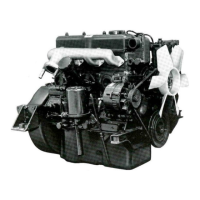
